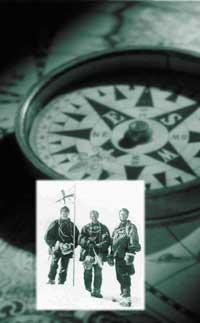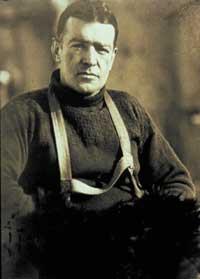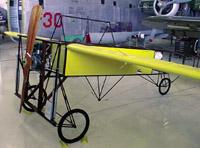In the magnetic South Pole!
2003/01/01 Roa Zubia, Guillermo - Elhuyar Zientzia Iturria: Elhuyar aldizkaria
It was not so important to reach the magnetic South Pole, so the Shackleton expedition did not have the same repercussion as the Norwegian expedition two years later. In this expedition, the Norwegian Admunsen and three other members reached the geographical South Pole on December 14, 1911.

These expeditions were not only explorations, but those carried out by the British, for example, were supported by the Royal Geographical Society, so numerous scientific investigations were carried out. Organized by Shackleton in 1907, on the boat Nimrod, the crew was limited to sailors, doctors, cooks and scientists.
The ships took the explorers to Antarctica, which built a wooden cabin on land. Thus, the ship was able to return north before being trapped in the ice. On 22 February 1908 the ship Nimrod was heading to New Zealand.
Winter nearby
The team started working before the end of the summer. Meteorologist Jameson Adams made measurements; Edgeworth David made a gauge of the snow level; Douglas Mawson installed an anemometer on the highest hill in the area. At the edges hung from the walls of the chabola was also measured the speed of evaporation by accumulation of snow and ice.
For his part, biologist James Murray, with a box descending by a crack, captured fish and crustaceans. To climb the box they used to be frozen, but, after thawing, they survived.
The Erebus volcano was also raised and the crater was measured. It was the first great achievement of the expedition; it must be taken into account that the active volcano is 3.794 meters high. It was not easy, in this ascension the fingers of geologist Sir Philip Brocklehurst were frozen.
In March the Sun began to hide and daily work became increasingly laborious. They had to prepare to face the winter.
Sure, the winter was dark, because they were within the polar circle, so they would not see the Sun again in the coming months. It was time to make plans for the spring, and especially to survive, both physically and psychologically. Inside the cabin the activity was reduced, the group companions slept for couples in small rooms and had to make a great effort to face this hard life.
When they saw the Sun again, they set in motion the plans: one team would head towards the geographical South Pole and another towards the magnetic South Pole.

In progress
Shackleton, Adams, Marshall and Wild left south, with more than 2,700 kilometers of travel. The trip was laborious. They had support ponies, but at the request of circumstances, some had to kill them and eat their meat and corn. After almost two and a half months, they had to despair and turn around, 150 kilometers from the pole. They were in the 88º 23' south length, on January 9, 1909. On March 4, early in the winter, the four explorers were in the Nimrod, out of danger.
The other team achieved the second goal of the expedition. David, Mackay and Mawson were explorers without experience. They headed on foot only north with the help of a vehicle for the first part. The vehicle served to supply a couple of power warehouses. The vehicle engine was heated too much and could not be used much more.

The rest of the road did so without animals. On the way, food was reduced, and from time to time someone fell into a crack. Mawson, an eminent scientist, studied the ice crystals of the walls when he was inside.
On January 15, 1909 the Mawson compass was almost vertical. He had only deviated 15 minutes from the vertical. They were almost there. Leaving things weighing on the ground, they walked to the magnetic South Pole. When they arrived, David and Mackay put the British flag and took a picture of three. David said: "I am now aware of this field in which is the magnetic South Pole for the British Empire." After these words they shouted in favor of King Edward VII and began the way back. On February 5, 1909, he collected the Nimrod ships. The adventure ended and the explorers were safe, waiting for the arrival of Shackleton and his companions.
The South Magnetic Pole has moved a lot since then, somehow the explorers were lucky enough to be at sea.

Gai honi buruzko eduki gehiago
Elhuyarrek garatutako teknologia





